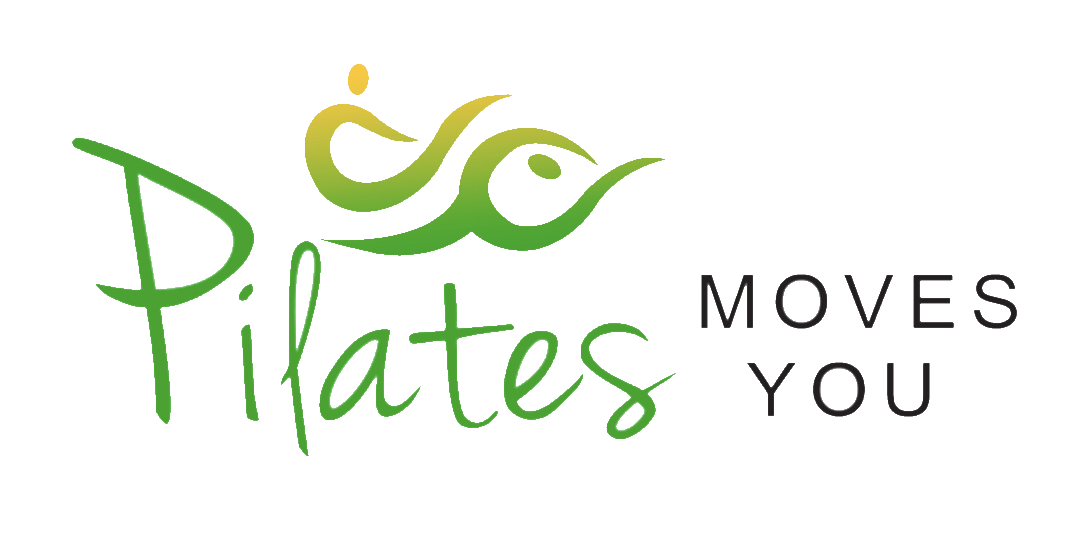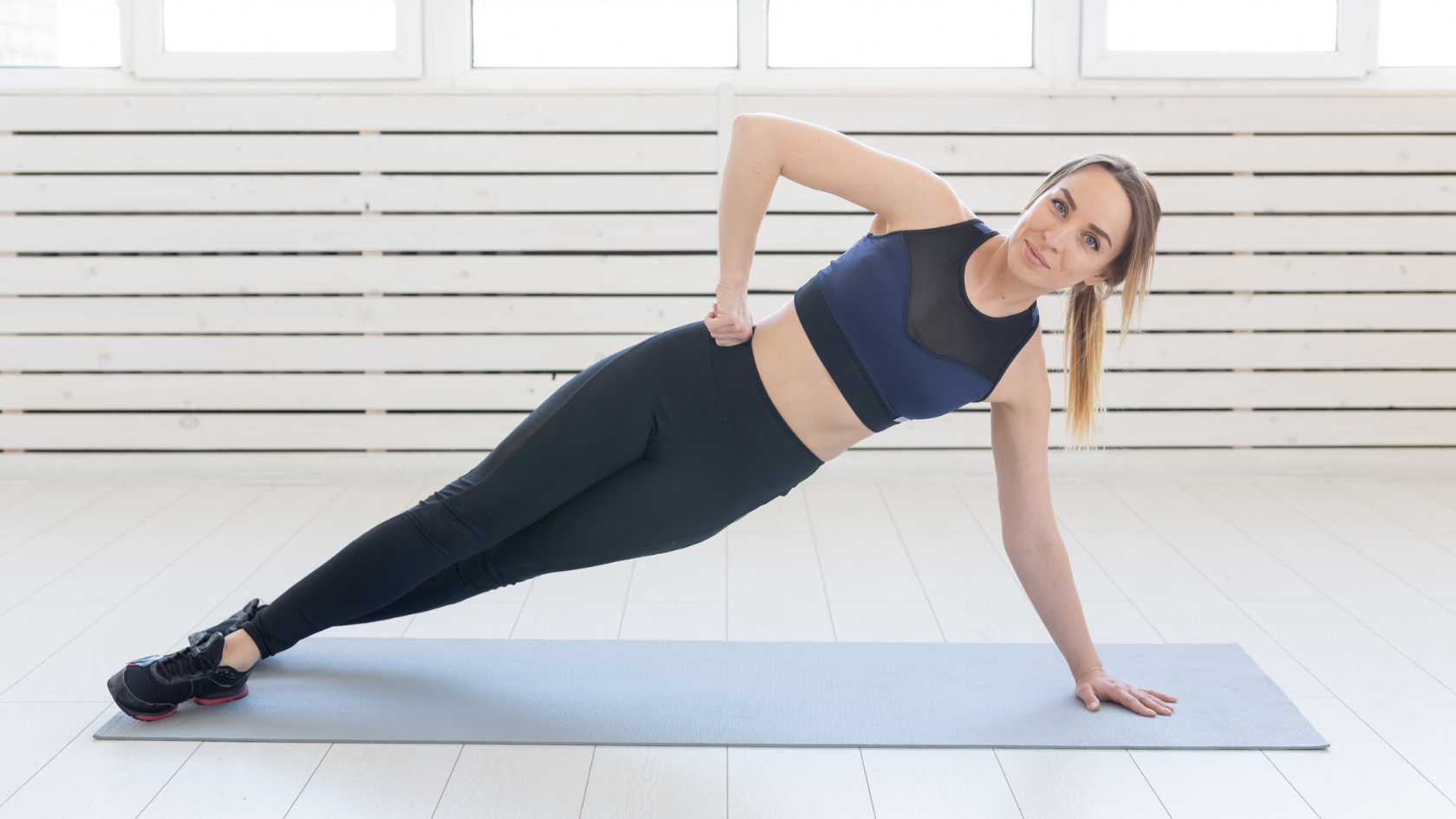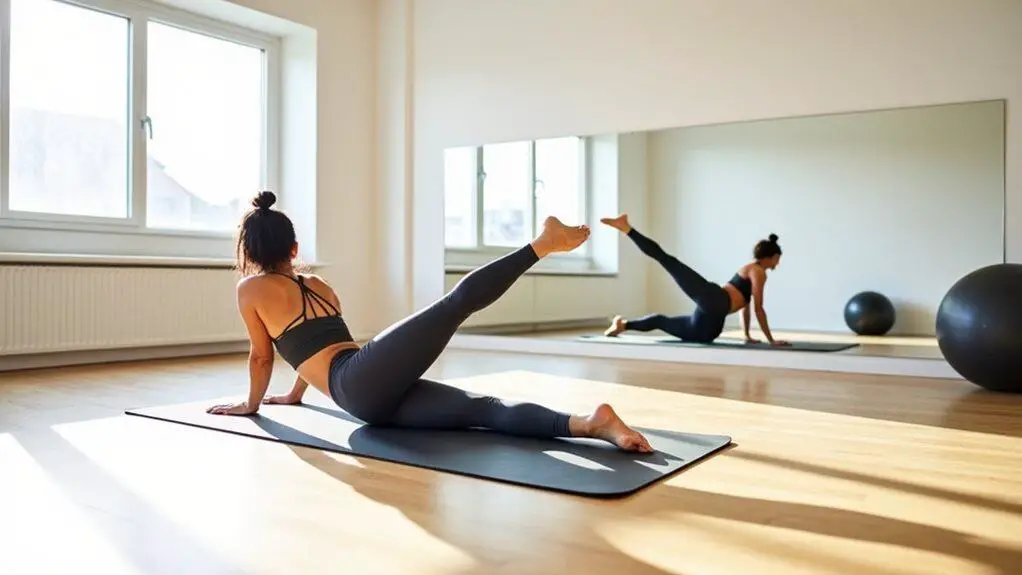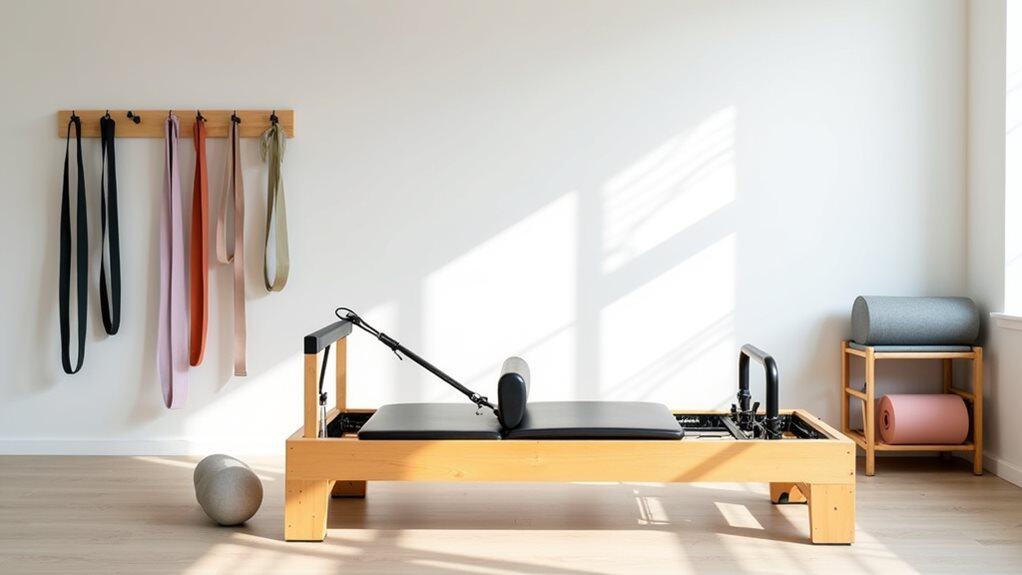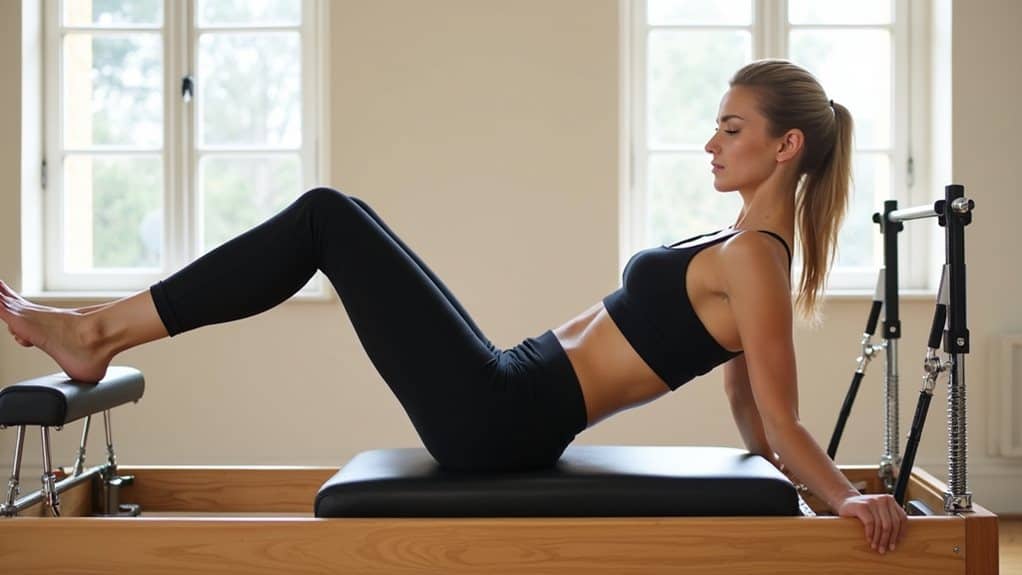While you typically wouldn’t associate stillness with flexibility, the Pilates plank is a surprising exception. As you hold yourself in this simple yet challenging position, you’re not only building core strength but also enhancing your flexibility, especially in your shoulders, chest, and hamstrings.
The plank’s effectiveness lies in the tension it creates throughout your body, encouraging muscle lengthening and increased range of motion. It’s a deceptive form of exercise; while it appears static, the dynamic tension works wonders for your flexibility.
By incorporating the Pilates plank into your routine, you’ll notice a gradual improvement in your overall flexibility, stability, and balance, which can aid in everyday movements and other physical activities.
Pilates Plank Fundamentals
Mastering the Pilates plank’s form is essential for enhancing your body’s flexibility and strength. To achieve this, you must focus on controlled movements and proper alignment.
Begin by aligning your hands directly under your shoulders. Engage your core to ensure core strength and stability. Your body should form a straight line from head to heels, which is crucial for activating the full range of relevant muscle groups.
Pay close attention to holding poses with precision to promote greater flexibility. It’s not just about holding a position; it’s about maintaining a form that challenges and builds your body’s capabilities.
Core Strength and Flexibility
You’ll find that the Pilates plank not only bolsters your core strength but also enhances your flexibility, making it a dual-benefit exercise. Regular Pilates practice activates core muscles such as the transversus abdominis and pelvic floor, which are essential for core strength and flexibility. These muscles form the foundation for a stable and strong center, supporting your spine and improving your balance and posture.
The practice of Pilates, with its fluid movements, helps improve your body’s connectedness, facilitating a greater range of motion. Specifically, Pilates exercises like the plank engage multiple muscle groups, challenging your core stability while simultaneously stretching and strengthening these areas. This integrated approach ensures that your core doesn’t just become strong, it becomes supple too, contributing to overall flexibility.
Muscles Targeted by Plank
When you engage in a Pilates plank, you’re firing up a complex network of muscles, spanning from your shoulders down to your hips. This powerhouse move does wonders for your body alignment and overall strength. Here’s a closer look at the key players:
- Transversus Abdominis: Your innermost abdominal muscle, essential for a strong core.
- Obliques: They flank your abs, helping with rotation and side bending.
- Rectus Abdominis: Known as the ‘six-pack’ muscles, they aid in flexing your trunk.
Each of these muscle groups works in harmony to support every movement, helping build endurance and stability.
The Pilates plank isn’t just about holding a position; it’s an active engagement that challenges your muscles to adapt and strengthen.
Pilates Plank Variations
Several Pilates plank variations can target your flexibility, each designed to challenge different muscle groups in your body. Joseph Pilates emphasized the importance of a comprehensive Pilates routine that includes slow and controlled movements.
When practicing Pilates, incorporating Mat Pilates plank variations can significantly enhance your core stability and flexibility. For example, try a side plank with leg lift to engage your obliques and stretch your hip abductors. Alternatively, add a twist to your plank to deepen the stretch in your thoracic spine and promote shoulder flexibility.
Pilates offers numerous options, so whether you’re attending Pilates classes or working out at home, explore these variations to maximize the flexibility benefits of your Pilates practice.
Incorporating Planks Into Routines
While incorporating Pilates planks into your routine, you’re not only building core strength but also enhancing your flexibility through each controlled movement. To make this addition to your Pilates practice both safe and effective, consider these tips:
- Start with the basics
- Master proper form to ensure better posture and prevent injury.
- Gradually increase the duration of each plank for sustained body awareness.
Integrate dynamic stretches
- Transition smoothly between planks and other exercises to improve your overall flexibility.
- Use planks as a platform for movements that target different muscle groups.
Make it a habit
- Consistently incorporating planks into routines solidifies muscle memory and fortifies stability.
- Recognize the progress in your agility and range of motion over time.
Plank’s Impact on Posture
You’ll find that the Pilates plank not only enhances your flexibility but also significantly boosts your posture alignment.
By consistently engaging your core muscles during a plank, you’re effectively strengthening your spine’s support system.
This core strength effect translates into a more upright and poised posture in your daily activities.
Posture Alignment Benefits
The Pilates plank exercise directly enhances your posture by building the core muscles necessary for spinal alignment.
When you engage in this exercise, you’re not just working on flexibility; you’re also focusing on posture alignment benefits that can take your physical health to a whole new level.
As you incorporate Pilates planks into your routine, you’ll notice a significant difference in your posture. You’ll stand taller, sit straighter, and move with greater ease.
Remember, a consistent practice is key to unlocking these posture alignment benefits, so make it a part of your regular exercise regime.
Core Strength Effect
Strengthen your core with the Pilates plank, and you’ll notice a marked improvement in your posture as your spine becomes better supported. This core strength effect is pivotal for your body’s overall fitness and functionality.
As you engage in this exercise, you’re not just performing static stretching; you’re conditioning your body to maintain a strong and balanced posture throughout your daily activities.
The increased range of motion that comes from a fortified core allows you to reach your full potential during workouts, enhancing your fitness level with every session.
Advanced Plank Progressions
Dive into advanced plank progressions to further challenge your core and enhance your body’s overall flexibility. These variations are a great option to prevent lower back pain and promote a balanced body.
Side Plank with Leg Lift
- Engages obliques and hip abductors
- Increases stride length in runners
- Reduces risk of injury through a more flexible lower body
Plank with Dynamic Leg Pull
- Utilizes your body weight for resistance
- Enhances flexibility in the hamstrings
- Improves stability and core strength
Rocking Plank
- A highly effective move for the entire core
- Challenges stability and enhances flexibility
- Incorporates into your fitness routine for dynamic strength
Sources
https://classpass.com/blog/how-pilates-builds-flexibility/
https://www.sweat.com/blogs/fitness/benefits-of-pilates
